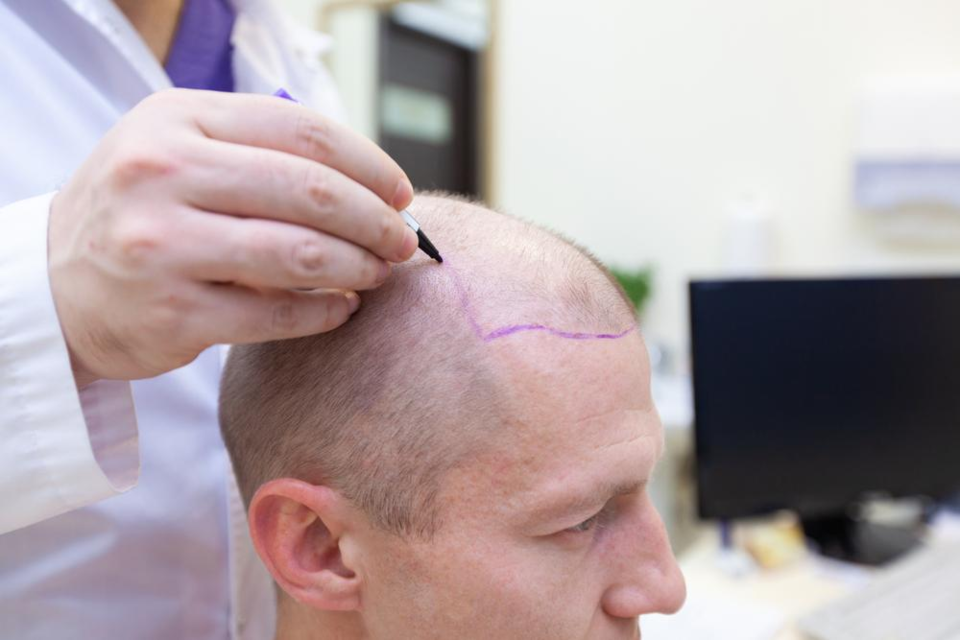
Hair loss is a common issue that many people experience as they age, and finding an effective solution is essential for boosting self-confidence and maintaining a youthful appearance. Among various options, the FUE hair transplant has become a popular choice for those seeking a permanent solution to hair thinning and baldness. But how do you determine if it's the best option for you? This article explores the advantages, considerations, and factors involved in making the decision, helping you understand whether this procedure is the right fit for your needs.
Understanding FUE Hair Transplant: What Is It?
The Follicular Unit Extraction (FUE) hair transplant in Dubai(زراعة الشعر FUE دبي) is a minimally invasive procedure where hair follicles are extracted from a donor area (usually the back of the head) and transplanted into areas experiencing hair thinning or baldness. Unlike traditional hair transplants, FUE does not require a large incision, making the recovery process quicker and with less scarring.
This technique has gained popularity for its natural-looking results and quicker healing time compared to older methods like Follicular Unit Transplantation (FUT). With FUE, the hair follicles are extracted one by one, reducing the risk of scarring and allowing for more precise placement of hair grafts.
The Benefits of FUE Hair Transplant:
When considering a FUE hair transplant, it’s important to understand the key benefits this procedure offers. Here are some of the most significant advantages:
Minimal Scarring: The technique leaves tiny, dot-like scars that are virtually invisible once healed, making it ideal for those who wear short hairstyles.
Quick Recovery: FUE has a faster recovery time compared to other transplant methods. Most individuals can return to normal activities within a few days to a week.
Natural Results: Since hair follicles are transplanted individually, the results tend to look more natural, blending seamlessly with your existing hair.
Permanent Solution: The transplanted hair follicles are permanent, meaning they continue to grow for a lifetime.
Less Pain: Due to the minimally invasive nature of the procedure, there’s usually less pain and discomfort during and after the procedure.
These benefits make FUE hair transplant an attractive option for people looking for a lasting solution to hair loss.
Factors to Consider Before Opting for FUE Hair Transplant
Before deciding whether FUE is the best choice for your hair restoration needs, it’s crucial to consider several factors. Here are some questions to ask yourself:
Hair Type and Density: FUE is more suitable for individuals with thick, dense hair. If your hair density is low, you may need to evaluate whether FUE can provide the coverage you desire.
Age: While age itself is not a limiting factor, younger individuals may face progressive hair loss, which could require additional procedures down the line.
Hair Loss Stage: FUE is most effective for people who are in the early to moderate stages of hair loss. For those with extensive baldness, other options may need to be considered in conjunction with FUE.
Scalp Condition: Healthy scalp conditions are essential for the success of a FUE hair transplant. Those with conditions like scalp infections or severe dandruff may need to address these issues first.
These factors can help you assess whether you're an ideal candidate for the procedure and if it's the best solution for your particular case.
Is FUE Hair Transplant Suitable for Everyone?
While FUE is an effective solution for many people, it's not suitable for everyone. It is essential to have realistic expectations and understand the limitations of the procedure.
For instance, FUE works best for individuals with good donor areas, meaning there needs to be enough healthy hair in the donor region for harvesting. Those with limited donor hair may need to explore alternative methods or combinations of treatments.
Additionally, patients with certain medical conditions or those on specific medications that interfere with hair growth may not be the best candidates for this procedure. It’s important to have a thorough consultation to ensure that FUE is right for you.
The Procedure and What to Expect:
The FUE hair transplant procedure typically involves several key steps. First, the donor area is numbed with local anesthesia. Then, individual hair follicles are extracted using a tiny punch tool. These follicles are carefully prepared and then transplanted into the bald or thinning areas of the scalp.
The procedure is done under local anesthesia, so patients remain awake throughout the session. Depending on the number of grafts needed, the procedure can last anywhere from a few hours to an entire day. Most patients experience minimal discomfort during the process, though slight soreness may be felt afterward.
After the procedure, patients are advised to follow specific aftercare instructions, including avoiding strenuous activities and protecting the newly transplanted hair from the sun.
Post-Procedure Care and Recovery:
After undergoing a FUE hair transplant, proper aftercare is crucial to ensure successful results. Recovery is typically faster than with older transplant methods, but there are still some important steps to follow:
Avoid Touching the Area: It's essential to refrain from touching or scratching the transplanted area during the initial healing phase to avoid damaging the follicles.
Use Gentle Shampoos: Only use mild, non-irritating shampoos during the first few weeks to prevent infection or damage to the sensitive areas of the scalp.
Follow Up Appointments: Regular check-ups with your practitioner are necessary to monitor the progress of hair growth and address any potential concerns.
Hair Growth Timeline: It’s important to note that the transplanted hair may shed in the first few weeks. This is normal, and new hair growth typically begins within 3 to 4 months, with full results visible after 9 to 12 months.
The Costs of FUE Hair Transplant:
One of the key factors to consider when thinking about a FUE hair transplant is the cost. The price can vary based on several factors, including the number of grafts needed, the complexity of the procedure, and the location of the clinic or service provider.
Generally, FUE hair transplants tend to be more expensive than traditional FUT procedures due to the precision and labor-intensive nature of the technique. However, given the long-term benefits and natural-looking results, many individuals find the investment worthwhile.
It’s important to consult with a professional to understand the costs involved, and make sure you’re getting value for the investment.
Final Thoughts: Is FUE Hair Transplant the Right Choice?
In conclusion, the FUE hair transplant offers a modern, effective solution for those dealing with hair loss. With its minimal scarring, quick recovery, and natural results, it’s no wonder that many people opt for this technique to restore their hairline. However, it's crucial to consider your specific hair loss situation, expectations, and budget before making the decision.
If you believe that FUE is the right choice for you, take the time to consult with professionals who can guide you through the process and provide a tailored plan for optimal results. With the right preparation and aftercare, a FUE hair transplant can restore not only your hair but also your confidence.













